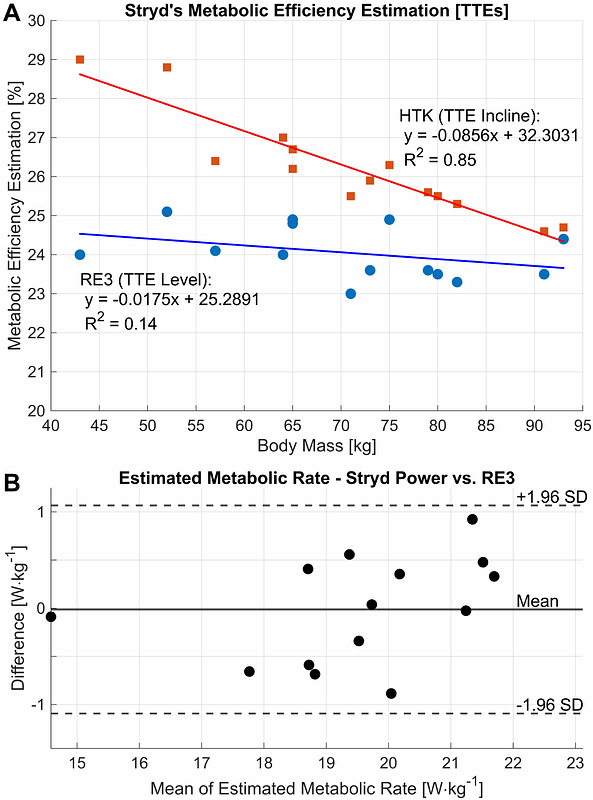Wearable Assessment of Level and Uphill Running at Critical Intensity

Wearable Assessment of Level and Uphill Running at Critical Intensity
Kirner, N. D. A.; Hoogkamer, W.
AbstractPurpose: We used commercially available wearable devices that measure running power (foot- vs. wrist-based) and muscle oxygenation to investigate time-to-exhaustion during level and uphill running at critical intensity. Methods: 14 healthy recreational runners participated in this study. They first ran a 3-minute all-out test to derive their critical running intensity. They then performed two time-to-exhaustion trials (TTEs) at this intensity at separate slopes to assess time-to-exhaustion, muscle oxygenation, and rating of perceived exertion. Results: We observed a shorter time-to-exhaustion (539 {+/-} 160 vs. 936 {+/-} 336 s), a faster decline in muscle oxygenation over time (-2.48 {+/-} 1.32 vs. -1.62 {+/-} 2.11 %{middle dot}min-1), a higher rating of perceived exertion at matched time points, and a higher estimated metabolic rate (19.51 {+/-} 1.99 vs. 17.82 {+/-} 1.62 W{middle dot}kg-1) for the level time-to-exhaustion test (TTELevel) compared to the uphill time-to-exhaustion test (TTEIncline) at a 2.86{degrees} (5%) slope. Conclusion: Our data suggests that athletes should be careful when using running power at critical intensity to guide their racing and training in non-level conditions.